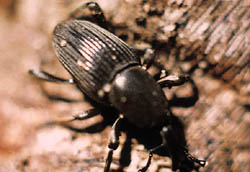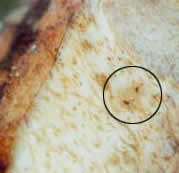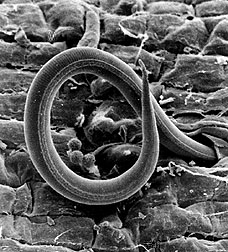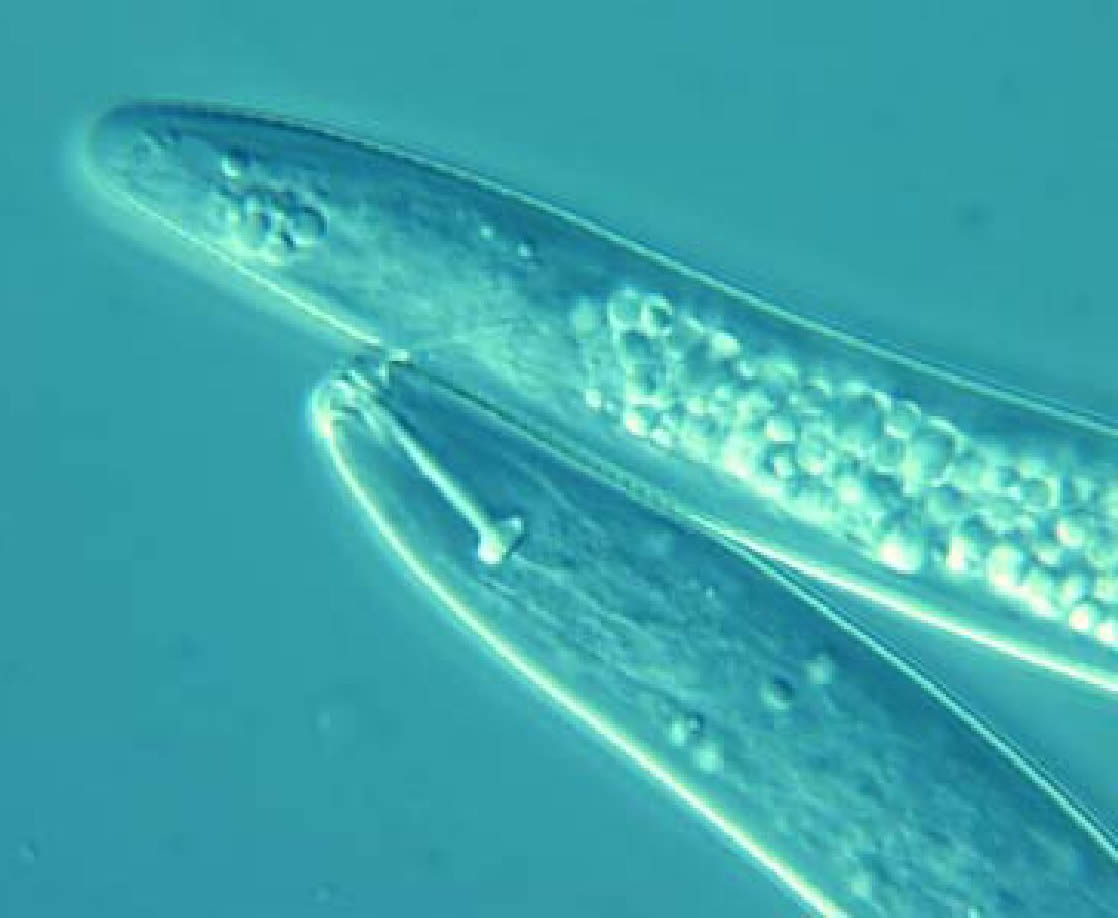Pests
Banana pseudostem weevil (Odoiporus longicollis) (ad hoc recommendation)

The weevil resembling the rhizome weevil of banana is becoming a serious pest in the recent years. Adults are either reddish brown or black. The pest is active during summer and monsoon months. Adult female weevil punctures and inserts eggs into the pseudostem. The grubs emerging out bore into the stem and feed within the stem. An initial symptom is in the form of exudation of plant sap and blackened mass that comes out from the hole bore by the grub. Finally the whole plant dies.
Control
- Field sanitation is the most important factor in the prophylactic and curative control of this pest.
- Remove affected plants along with the rhizome in full and destroy them by burning the life stages of the insect using kerosene or by burying the material in deep pits in soil.
- Destroy the parts of rhizome and pseudostem of harvested plants in the field and destroy them as described above.
- Remove the dry outer sheaths of the pseudostem of all infested and un-infested plants in the endemic areas and spray any of the recommended insecticides. Drenching all the leaf axils, rhizome and surrounding soil and all round the entire pseudostem inserting the nozzle through the bore holes made by the larvae if any and also within the outer sheathes by slightly raising the same at different spots is also effective. Apply quinalphos 0.05% or chlorpyrifos 0.03% or carbaryl 0.2%. Repeat the treatment after 3 weeks if the infestation persists.
Banana rhizome weevil (Cosmopolites sordidus)
The attack by this pest is reported to be serious in all localities where banana is cultivated. Female adults puncture healthy rhizomes and insert eggs through it. Grubs tunnel within and feed resulting in the stunting of rhizome. If the infestation occurs on a mature rhizome, damage symptoms appear through the reduction in leaf number, bunch size and the fruit number appear.
Control
- Adopt strict field sanitation.
- Select only healthy planting material.
- Deep plough the land so as to expose the inner soil layer to sun.
- Cut and remove the outer layer of the rhizome and sundry for 3-4 days after smearing it with slurry of cowdung and ash.
- Set traps using pseudostem of approximately 1/2 m length, which are split lengthwise and laid in the field. Adults attracted to it during nights may be collected and destroyed.
- Application of Thiomethoxam 25 WG 0.2 g/l or 1 g/ 5 litre or Fipronil 0.3 G 10 g formulation /plant at planting followed by two applications 2 and 5 months after planting
- Sucker treatment with pseudomonas fluorescens @ 20 gl litre +sucker treatment with entomopathogenic nematode Heterorhabditis bacteriophora @ 4 infected wax moth larvae /plant at planting followed by two applications 2 and 5 months after planting
Aphid (Pentalonia nigronervosa)

The insect, is the vector of the virus causing bunchy top disease. Yellowish green nymphs and adults suck cell sap and devitalise plants. Affected parts become discoloured and malformed. High humidity favours rapid multiplication of this pest. The aphids are mostly observed on the lower surface of the leaves.
Spindle leaf miner (Assuania sp.)
Spray dimethoate 0.05% on the spindle for controlling the leaf miner.
Nematodes




Major species are burrowing nematode (Radopholus sp.), root knot nematode (Meloidogyne incognita), root lesion nematode (Pratylenchus coffeae) and cyst nematode (Heterodera oryzicola).
In case of severe infestation there will be high reduction in the number of leaves, total bunch weight and the number of fruits.
Control
Pare the rhizomes and apply neem cake @ 1 kg/plant at the time of the planting .
For managing nematodes paring + banana sucker treatment with Bacillus macerans/ Paecilomyces lilacinus @ 5 g/ sucker + pit application @ 10 g/ pit 45 days after planting can be recommended.
